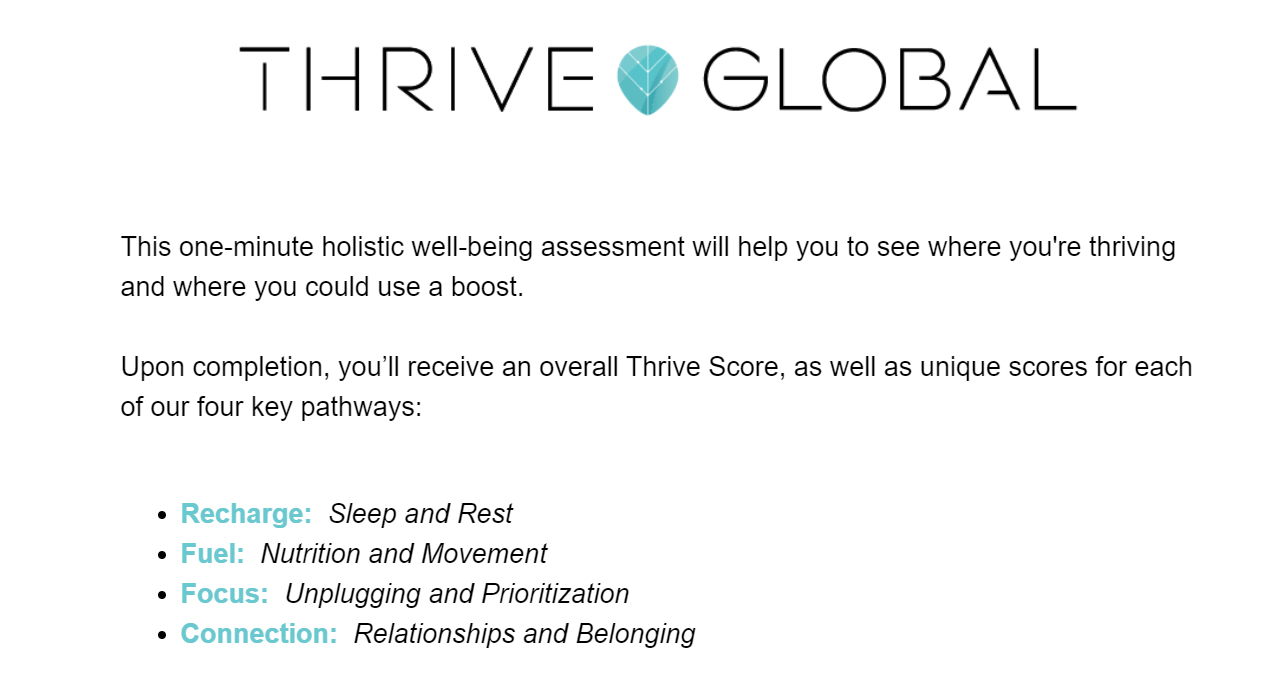The Leader’s Guide to Employee Wellbeing
Equipping people with the resources to thrive is essential, given the challenges we’re facing:
- Over 75% of people agree the COVID-19 outbreak has negatively impacted their habits, routines, and structures.
- Recent Salesforce research findings suggest that 69% of employees are currently concerned about their mental health, while 81% of employees are currently concerned about their physical health. These statistics align with recent Thrive Sciences research that found 82% of individuals feel the COVID-19 pandemic has had a bigger negative impact on their stress than any other event in history.
- Even before the pandemic, nearly three-quarters of American adults said they wish they knew more small, everyday steps to improve their mental wellbeing, and half said that when it comes to managing stress, they don’t know where to start.
When we’re up against such challenges, carving out time to take care of our physical and mental wellbeing might seem like a luxury we can’t afford. That’s why this guide is filled with Microsteps from Thrive Global, the behavior-change technology company founded by Arianna Huffington. Microsteps are small, science-backed actions we can start taking immediately to build habits that can have a big impact on our wellbeing and performance.
Empower your team to take charge of their wellbeing by taking the wellbeing assessment, and using the Microsteps included in this guide.
Tip #1: Focus on what you can control.
We’re overwhelmed, drained, and depleted. No one knows what the world is going to look like a month from now, or a year from now. How can we possibly take care of ourselves when so much is out of our control?
To build our physical and mental resilience, we need to make a key mindset shift and realize that even in these uncertain times, there are aspects of our lives that we can control. For example, we can make one better choice around what we eat, or choose to set boundaries with our devices to reduce stress and improve our connections with others.


Tip #2: Learn individual signs of stress.
Our brains are like a battery. We only have a certain amount of battery power every day. And the state of our battery is determined by a range of factors, from sleep, nutrition, and exercise, to how we manage our time and the decisions we make.
When your brain is fully charged, you are at your best; you are your most energetic, productive, and creative self. You’re resilient in the face of setbacks and challenges and fully present to experience wonder and joy.
But when your battery is drained, you’re more irritable and reactive, less patient with others and with yourself, more likely to make errors in judgment, and less able to connect with others in meaningful ways — from co-workers to friends and family. When it builds up and becomes unmanageable, negative stress can leave our battery chronically drained, which could lead to mental health challenges like depression or anxiety.
When we know more about our individual mental batteries — the sources of our stress, how we respond, and what actions help us recharge — we can take steps to recharge them and manage stress before it builds up.
Think of it as spotting signals in ourselves. We’re good at doing this for our physical health. When we notice symptoms like sniffling or a sore throat, we know we might have a cold coming on. And we know there are things we can do to get out in front of a cold in preventative ways.
But we’re not so good at checking in on the other aspects of our wellbeing. Try this Microstep to familiarize yourself with your own signs of overstress:


Check in with yourself using these easy prompts:
“My stressors are …” What leads to stress for you? For example, “I get stressed when I’m in the middle of a busy day and I know I should take a break for lunch, but I don’t feel I have the time.”
“My signs are …” Note the signs that tell you your stress is becoming overwhelming. For example, “My sign that I’m getting overly stressed is that I have a hard time focusing and making decisions.”
“My solutions are …” Note the Microsteps that help you manage your stress before it becomes a problem. For example, “My solution is setting aside time on my calendar for a short walk, outside or even around my home. It settles me and helps me keep my stress in perspective.”
Tip #3: Give yourself and your team permission to recharge and reset throughout the day.
Microsteps


Investing in your health and wellbeing starts with micro-moments. Encourage your teams to take the wellness quiz and find a Microstep that helps you thrive.
Continue your journey and help your teams take the next step in their health and wellbeing journeys with The Leader's Guide to Building Resilient Teams and The Leader's Guide to Work-Life Integration.
Wellness Playbook Guides

The Leader's Guide to Employee Wellbeing

The Leader’s Guide to Building Resilient Teams

The Leader's Guide to Work-Life Integration

Employee Health and Wellbeing
About Thrive Global
More Resources

Employee Health and Wellbeing

Workplace Command Center




